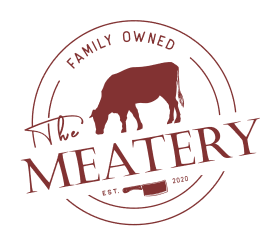When discussing the world's finest beef, Kobe beef consistently ranks at the pinnacle of excellence. This legendary meat, produced from Tajima-gyu cattle in Japan's Hyogo Prefecture, represents the highest grade of beef available globally. What makes it extraordinary is a combination of strict regulations, centuries-old traditions, and unique breeding practices.
While "best" can be subjective, Kobe beef's reputation is backed by measurable qualities. The meat must achieve a Beef Marbling Score (BMS) of 6 or higher on a 12-point scale, with most authentic Kobe beef scoring between 8 and 12. This exceptional marbling creates the characteristic "snowflake" pattern that contributes to its legendary texture and flavor.
However, several other prestigious beef varieties compete for the title of world's best:
- Matsusaka Beef - From Japanese Black cattle raised in Mie Prefecture
- Ohmi Beef - A heritage beef from Japan's Shiga Prefecture
- Sanuki Olive Beef - Cattle fed with olive pulp, producing uniquely flavored meat
What truly sets Kobe beef apart is its strict certification process. Only about 3,000 cattle per year qualify as authentic Kobe beef, and each must meet precise criteria including genetics, weight, meat quality, and place of origin. This exclusivity, combined with its extraordinary taste and texture, has earned Kobe beef its reputation as the world's finest beef.
Cultural Significance In Japan
In Japanese culture, Kobe beef represents far more than just premium meat; it embodies centuries of tradition, craftsmanship, and cultural pride. The history of Kobe beef dates back to the Meiji Period (1868-1912), when Japan first opened its ports to foreign trade and influence. The cattle-raising techniques developed in Hyogo Prefecture became legendary, creating what would become a national treasure.
The cultural importance of Kobe beef is reflected in various aspects of Japanese society:
- Traditional ceremonies and celebrations often feature Kobe beef as a prestigious offering
- The raising of Tajima-gyu cattle is considered an art form passed down through generations
- Local festivals and events celebrate the heritage and tradition of Kobe beef production
Japanese farmers who raise Kobe beef cattle are viewed as artisans, maintaining strict standards and traditional practices. These include regular massaging of the cattle, feeding them specific diets including local beer (which aids digestion), and maintaining stress-free environments. This level of care reflects the Japanese cultural value of kodawari - the uncompromising pursuit of perfection in one's craft.
The economic and social impact of Kobe beef in Japan cannot be overstated. It has become a symbol of Japanese luxury and craftsmanship, contributing significantly to the region's economy and international reputation.
Kobe Vs Wagyu Differences
Understanding the distinction between Kobe beef and Wagyu is crucial for appreciating these premium meats. While all Kobe beef is Wagyu, not all Wagyu is Kobe beef. The term "Wagyu" literally means "Japanese cattle" and encompasses several breeds of cattle native to Japan.
Key differences include:
- Origin and Breeding: Kobe beef comes exclusively from Tajima-gyu cattle raised in Hyogo Prefecture, while Wagyu can come from different Japanese cattle breeds raised anywhere
- Certification: Kobe beef requires strict certification from the Kobe Beef Marketing & Distribution Promotion Association, while Wagyu has broader certification standards
- Quality Grades: Kobe beef must meet higher minimum quality standards than general Wagyu
The grading criteria also differ significantly. For beef to be certified as Kobe, it must meet specific requirements:
- Born, raised, and processed in Hyogo Prefecture
- Meat quality score of 4 or above on a 5-point scale
- Marbling score of 6 or higher (BMS)
- Meat yield grade of A or B
Sourcing And Sustainability
The sourcing of authentic Kobe beef involves a complex system of regulations and sustainability practices. With only about 3,000 cattle certified annually, maintaining sustainable production while meeting global demand presents unique challenges.
Sustainable practices in Kobe beef production include:
- Controlled breeding programs to maintain genetic purity
- Local feed sourcing to reduce environmental impact
- Strict animal welfare standards
- Limited production to prevent overfarming
Authentication is crucial in the Kobe beef market. Each certified animal receives a unique 10-digit identification number, traceable throughout its life cycle. This system ensures transparency and maintains the integrity of the Kobe beef brand while supporting sustainable practices.
Consumers should be aware that many restaurants outside Japan claiming to serve Kobe beef may actually be offering other types of Wagyu or high-grade beef. Authentic Kobe beef is exported in very limited quantities, making it rare and expensive in international markets.
How does Kobe beef compare to Angus?
The comparison between Kobe beef and Angus reveals fundamental differences in breeding, texture, flavor, and market positioning. Angus beef, while considered premium in many markets, differs significantly from Kobe beef in several key aspects:
Key Differences:
- Marbling: Kobe beef features significantly more intricate and abundant marbling
- Texture: Kobe beef is notably more tender and has a characteristic melt-in-your-mouth quality
- Price Point: Kobe beef typically costs 10-15 times more than premium Angus
- Availability: Angus is widely available, while authentic Kobe beef is extremely rare
While Angus beef excels in its own right, offering excellent flavor and quality at a more accessible price point, Kobe beef represents a different category altogether, characterized by its unique texture, flavor complexity, and exclusivity.
How should Kobe beef be eaten?
The proper preparation and consumption of Kobe beef is considered an art form, with specific traditions and methods to maximize its unique qualities. Traditional Japanese preparation methods emphasize simplicity to highlight the meat's natural flavors.
Recommended preparation methods:
- Teppanyaki style (grilled on a flat iron surface)
- Thin slices for Shabu-shabu
- Small, cubed portions for maximum flavor appreciation
Serving guidelines include:
- Cook to medium-rare at most to preserve tenderness
- Minimal seasoning - usually just salt and pepper
- Small portion sizes (100-200g) due to richness
- Serve with simple accompaniments that won't overpower the meat
The experience of eating Kobe beef should be savored slowly, allowing time to appreciate its complex flavors and unique texture. Many experts recommend trying it first without any sauce to fully experience its natural taste.









